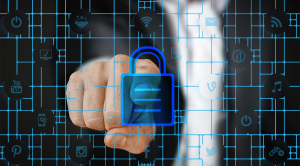What is phishing and how to prevent phishing attacks?
With billions of fraud cases appearing every day, online fraud has become one of the main methods that bad guys use to attack individuals and organizations.
In 2022 alone, the US Federal Bureau of Investigation (FBI) received more than 800,000 complaints related to internet crimes in the United States, with significant total losses reaching an estimate of up to 10.3 billion USD. Of these cases, more than 300,000 were directly related to fraud.
Successful phishing attacks by bad actors can lead to serious consequences. They have the ability to steal your identity, take over your bank account, or even attack you with ransomware. If you own a business, the consequences can also include loss of intellectual property, customer trust and your brand.
What is fraud?
Phishing is a form of online fraud in which attackers use false means, usually via email, to trick you into revealing sensitive personal information such as login credentials or details. credit card, or to persuade you to download malware to your device.
Messages often look like they come from a trusted source, such as a bank, email service provider, or a popular service like Amazon, PayPal, or Facebook. However, their goal is to trick you into performing one of the following actions:
1.Enter your personal information on a fake website that appears to be a legitimate website, but is actually intended to steal your data.
2.Click links to malicious websites or download infected attachments to install malware on your computer, tablet or phone.
3. Respond to messages providing sensitive personal information via email.
Often, in the form of social engineering, these phishing messages create a sense of urgency or excitement so you respond without further thought.
How does the scam work?
Typically, phishing messages contain urgent requests, threats, or rewards that require you to act immediately. For example, they may claim your Amazon account has been “suspended” and you need to “confirm” your account details to reactivate it.
In this phishing email, which appears to be from the delivery service UPS, you are asked to click on a link to pay a “delivery fee” and provide personal information. Otherwise, you will not receive your “package”.
Phishing: Phishing emails are often sent to specific people within an organization, often people with special access rights. The aim is to steal sensitive information such as login details or infect the victim's device with malware to collect confidential data.
Messages are often personalized and appear to come from a sender that the target trusts, so it's easy for them to be caught off guard. For example, a scammer impersonating a company accountant might email an accounting assistant asking them to make an urgent payment to a fake supplier.
How to detect phishing emails:
1.Unofficial sender address
2. General greetings
3. Urgent request, threat or reward
4. Grammar or spelling errors
5.Unsolicited links, buttons or attachments
How to prevent phishing attacks:
1.Secure your email
2.Be careful with links and attachments
3.Do not reply to spam
4.Install anti-virus software
5.Always update your device
6.Use strong passwords and 2FA
7.Back up your data










